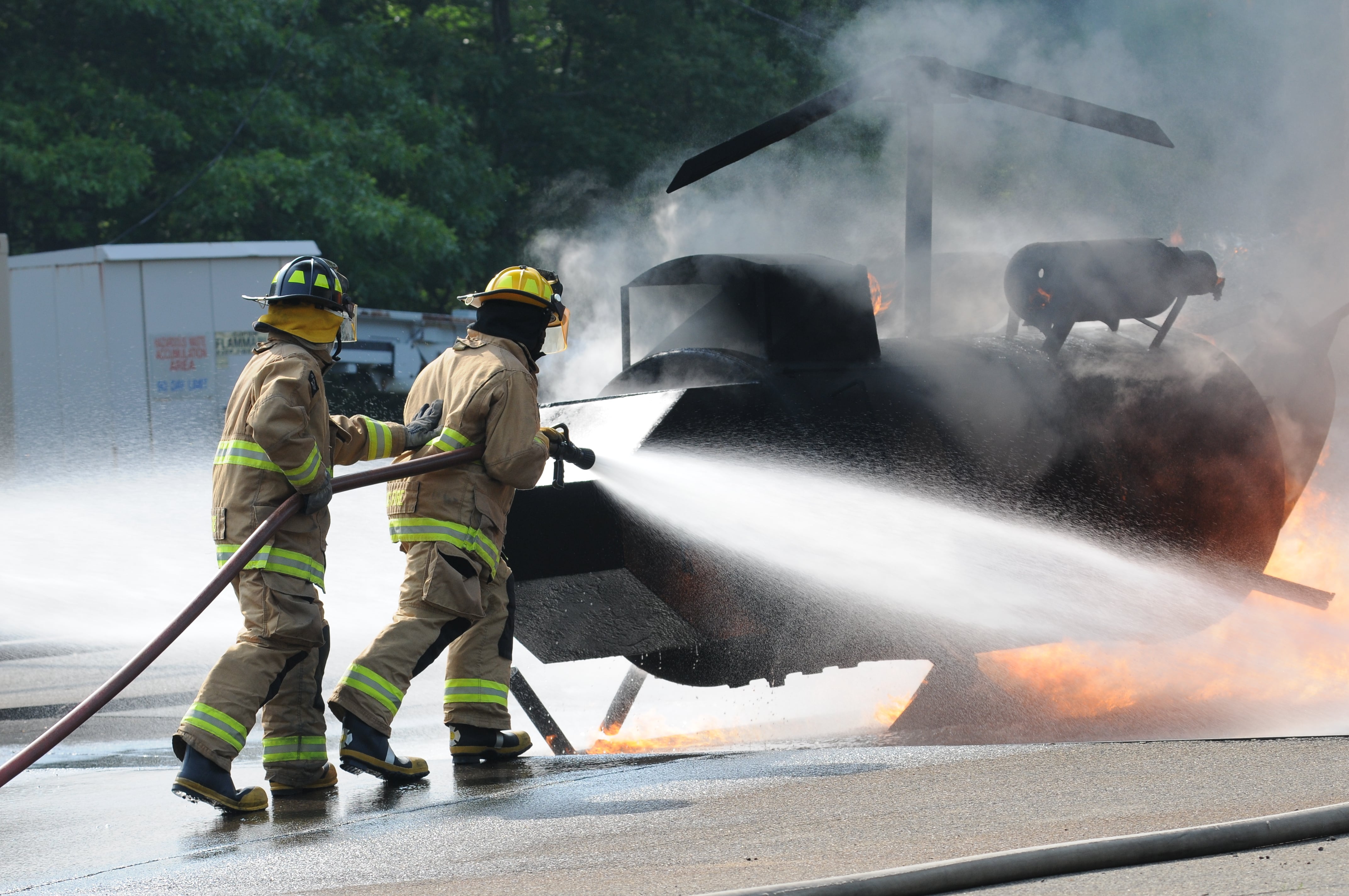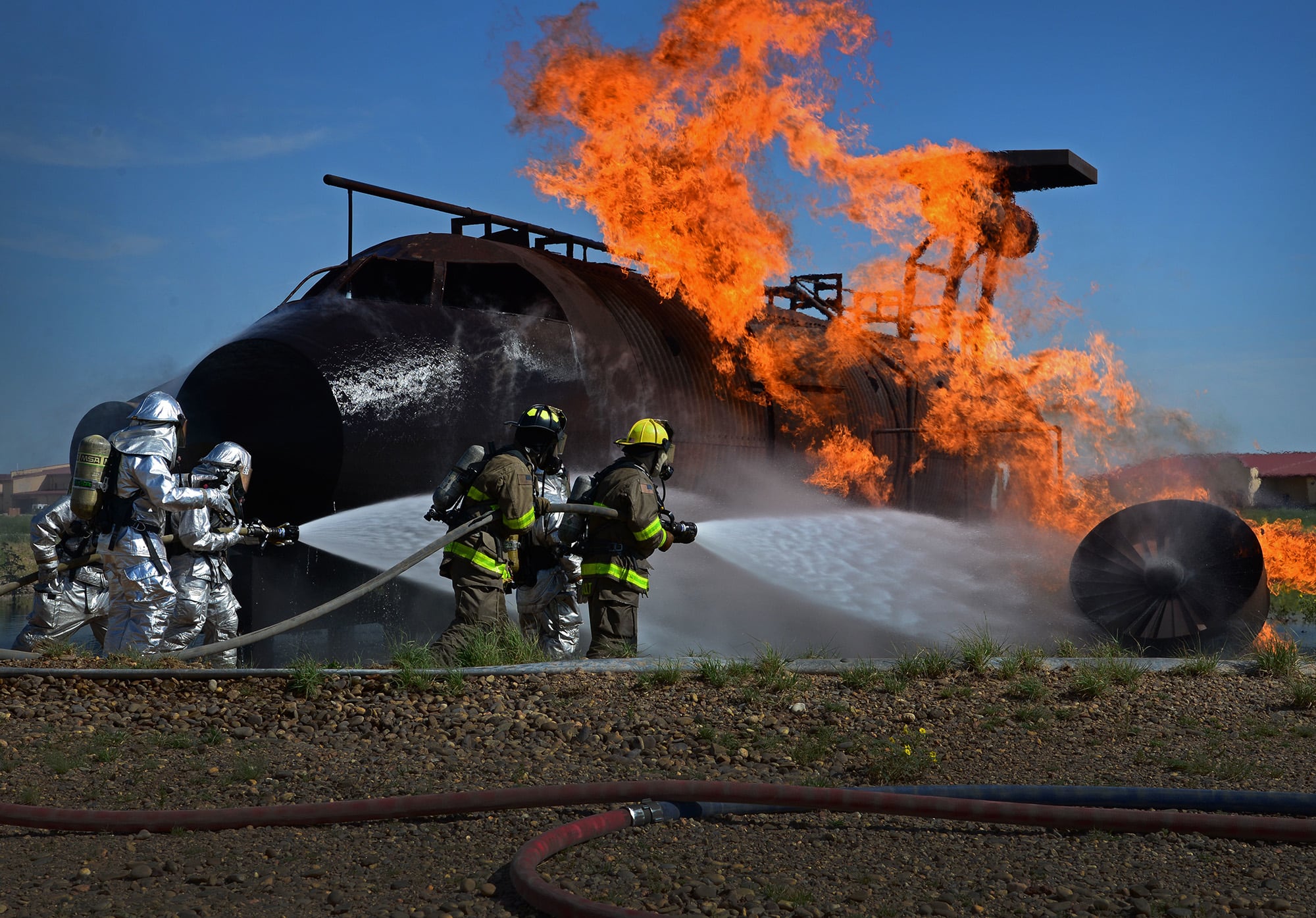ALBUQUERQUE, N.M. — Chemicals associated with firefighting foam once used at a U.S. Air Force base in eastern New Mexico have been detected in groundwater on and near the military installation, prompting requests by state officials for more tests and a study to determine the extent of the toxic plume.
The New Mexico Environment Department confirmed the contamination Tuesday, saying officials at Cannon Air Force Base notified state environment, health and agricultural officials about the compounds.
Per- and polyfluoroalkyl substances, or PFAS, have been detected in a small number of the 19 off-base wells tested so far. Some of the wells supply water to local dairies.
RELATED

The Air Force is making bottled water available for drinking and cooking for residents who rely on wells that exceed a health advisory level set by the U.S. Environmental Protection Agency.
Contamination beyond the base ranges from less than half of the federal advisory level to more than 20 times the level, according to sampling done by the Air Force.
The concentrations are much higher — more than 370 times the advisory level — for some of the on-base monitoring wells.
"This is all in groundwater, so we're concerned about protection and remediation of groundwater in that area. So one of the first steps, of course, would be holding the United States Air Force accountable for that work," said Bruce Yurdin, the department's deputy secretary.
A spokesman for the base did not immediately return a message seeking comment.
The base announced in August that it would be sampling to assess the potential for drinking water contamination stemming from past firefighting activities.
"We are committed to protecting the health of our airmen and community partners and will conduct a thorough investigation to ensure we know if this contaminant has made it beyond the boundaries of Cannon Air Force Base," Col. Stewart Hammons, 27th Special Operations Wing commander, said in a statement at the time.
RELATED

The chemical compounds have been detected at military bases and other sites around the U.S. EPA testing from 2013 to 2015 found significant amounts of PFAS in public water supplies in 33 states, a finding that helped move PFAS up as a national priority.
In Michigan, the compounds sparked enough concern that Gov. Rick Snyder created a state response team and approved $23 million in emergency spending. Washington became the first state to ban any firefighting foam with the compounds.
Some members of Congress also are pressing for the EPA to act faster to bring more of the country’s most hazardous industrial compounds under regulation.
New Mexico environment officials say this marks the first major detection of the chemicals in the state and more work needs to be done to determine the scope of the contamination at Cannon and areas bordering the base.
The New Mexico Department of Agriculture has requested that the U.S. Food and Drug Administration immediately determine if any impacts on health exist, and if so, that the federal agency establish a regulatory threshold for PFAS in dairy products.
The state Environment Department is overseeing the Air Force's investigation of the contamination at Cannon. Aside from studying the plume, the agency is requiring the Air Force to sample all water wells within a 4-mile (6-kilometer) radius of the southeastern corner of the base.
State officials are recommending the use of bottled water for residents and businesses with private domestic wells in that area.





